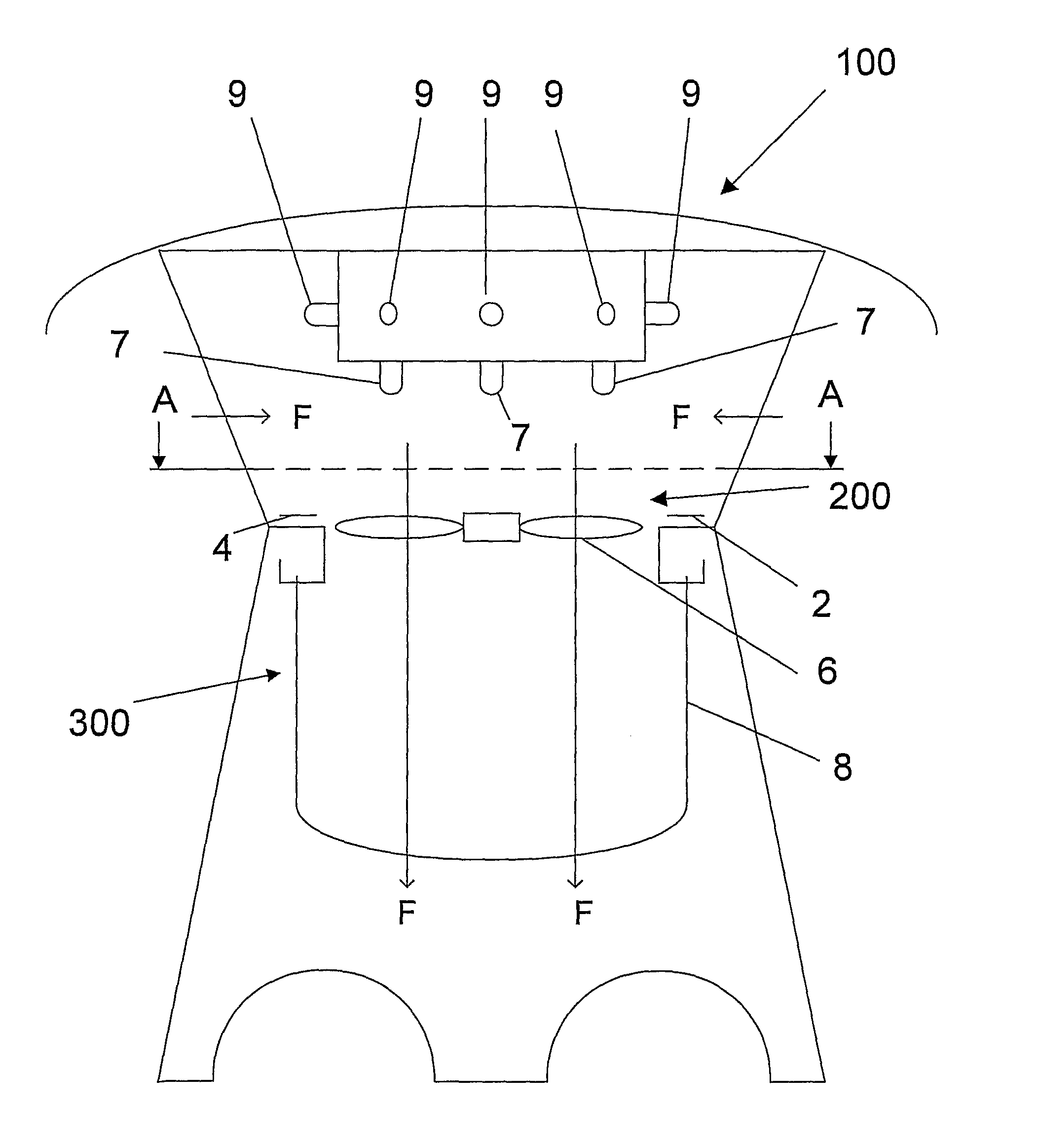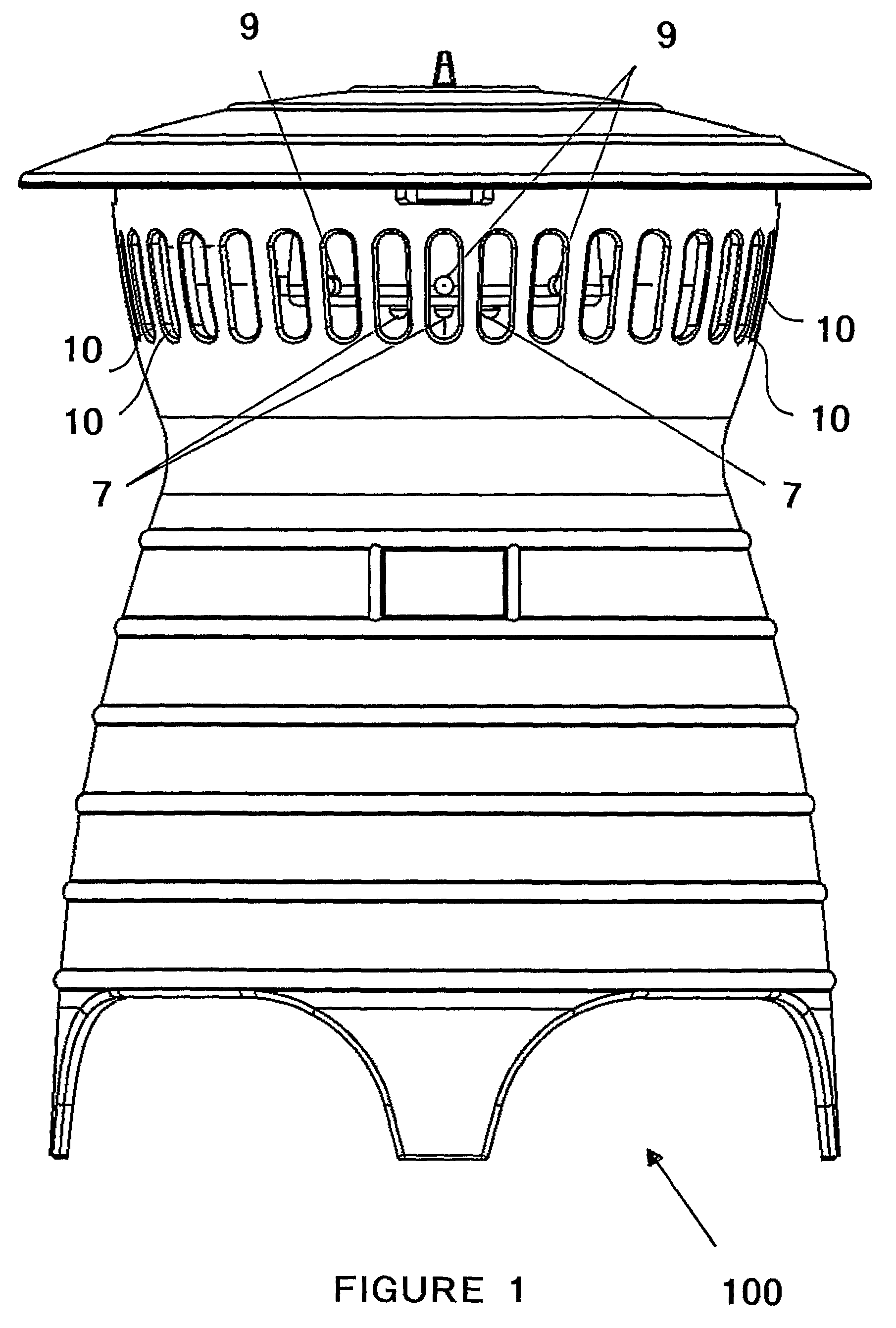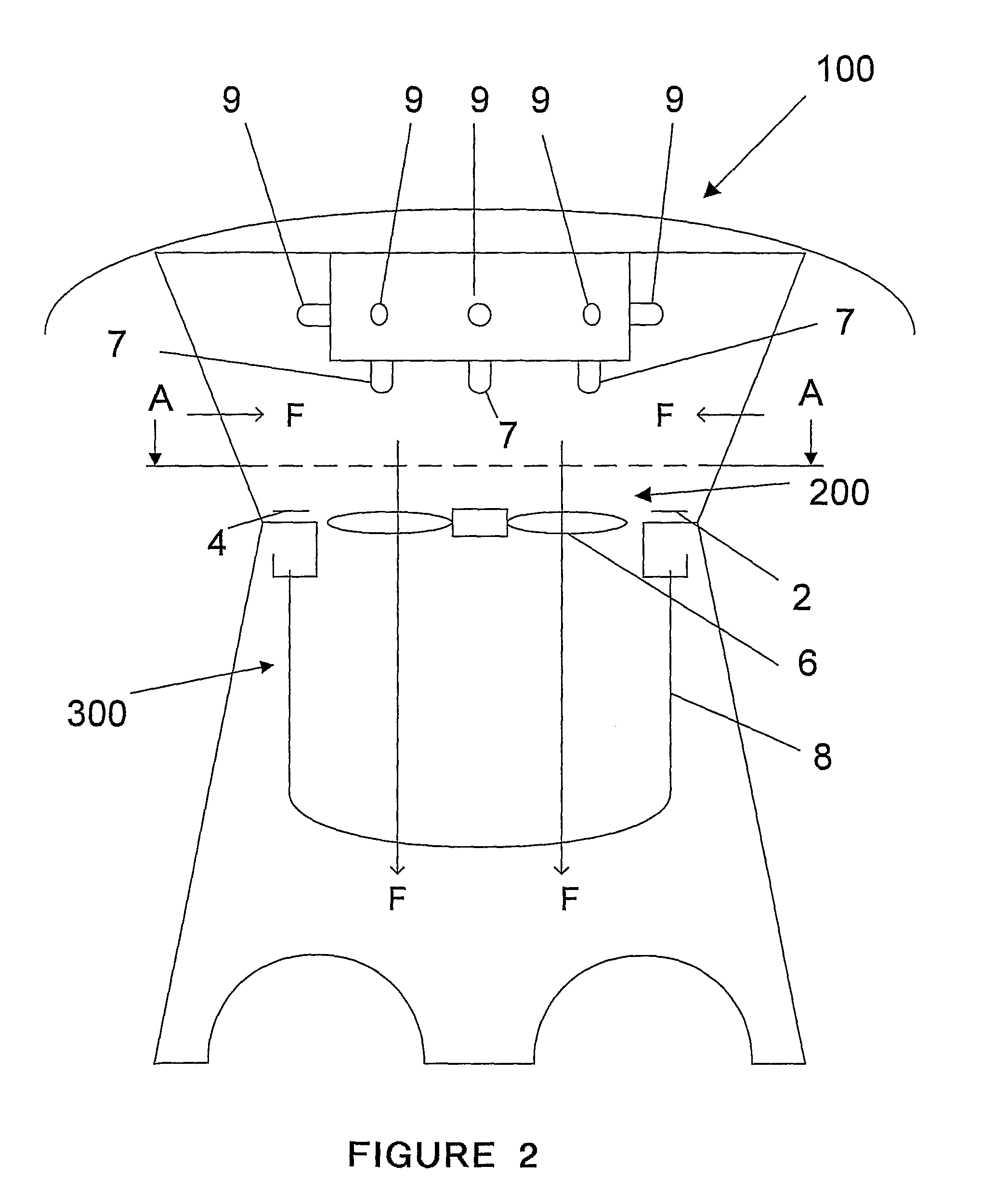Insect trap and method of attracting insects
a technology of insect traps and insects, applied in the field of insect traps and methods of attracting insects, can solve the problems of not achieving the required characteristics with sufficient accuracy, unable to simulate the required characteristics, and unable to catch and/or kill insects
- Summary
- Abstract
- Description
- Claims
- Application Information
AI Technical Summary
Benefits of technology
Problems solved by technology
Method used
Image
Examples
Embodiment Construction
[0043]Referring first to FIGS. 1 to 3, an insect trap according to one possible embodiment of the present invention is generally referenced 100. In the embodiment illustrated the trap 100 is adapted to trap and kill mosquitoes, although the trap 100 may be adapted to trap and / or kill members of another selected group or species of insects.
[0044]The trap 100 includes insect attractant means, generally referenced 200, which are adjacent an insect retaining means 300, and are therefore within an effective zone of the retaining means 300, as is described further below. The attractant means 200 includes at least one variable infra-red emission means.
[0045]In the example shown in FIGS. 1-3, the variable infra-red emitting means includes first, second, third and fourth heating elements, generally referenced 1, 2, 3 and 4 respectively. The heating elements are controlled by control means (not shown) which control the heating and cooling of the elements 1-4. In a preferred embodiment the ele...
PUM
 Login to View More
Login to View More Abstract
Description
Claims
Application Information
 Login to View More
Login to View More - R&D
- Intellectual Property
- Life Sciences
- Materials
- Tech Scout
- Unparalleled Data Quality
- Higher Quality Content
- 60% Fewer Hallucinations
Browse by: Latest US Patents, China's latest patents, Technical Efficacy Thesaurus, Application Domain, Technology Topic, Popular Technical Reports.
© 2025 PatSnap. All rights reserved.Legal|Privacy policy|Modern Slavery Act Transparency Statement|Sitemap|About US| Contact US: help@patsnap.com



